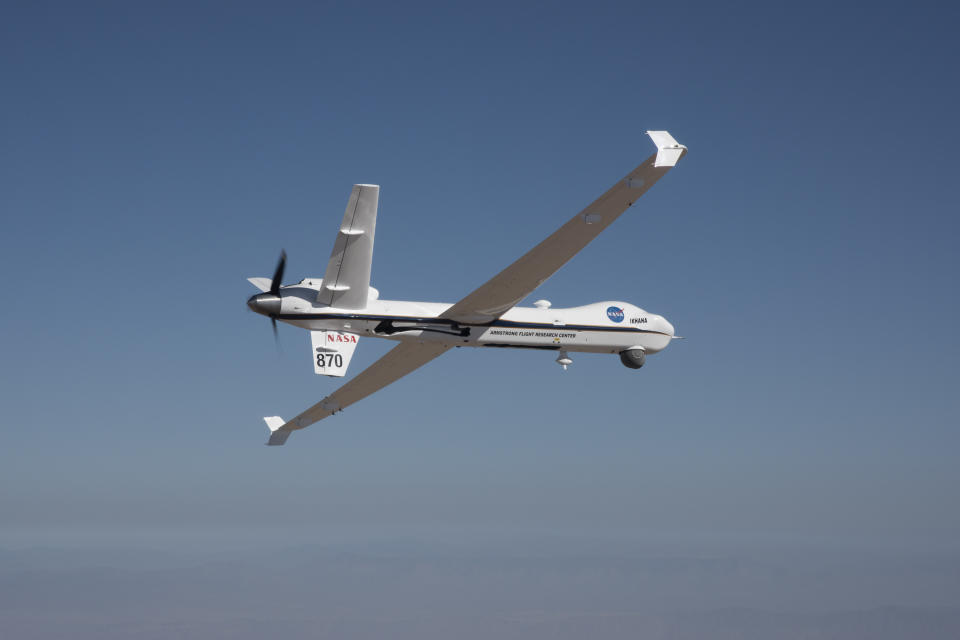NASA’s unmanned drone had its first solo flight in public airspace
The feat could lead to UAVs fighting fires or performing search and rescue.
NASA's remotely-piloted Ikhana aircraft flew in public airspace for the first time without a chase aircraft. Typically, one follows the large drone when it flies in parts of the sky zoned for use by commercial and private pilots, but the FAA granted the space agency a waiver to test out several key technologies they've been developing for years detect and avoid other aircraft. They wanted to know if this baby bird could fly on its own among piloted planes, and it passed the test.
The Ikhana took off from Edwards Air Force Base in California and transitioned through several air traffic control jurisdictions and spent time in multiple altitude zones (up to 20,000 feet for commercial aviation, down to 10,000 feet for general aviation) to make sure its remote pilot could navigate and coordinate with ground operations just like he was in the drone's cockpit. Ideally, this successful trial opens the door to using drones for other civil service purposes, like helping fighting forest fires or performing search and rescue operations, according to NASA's press release.



